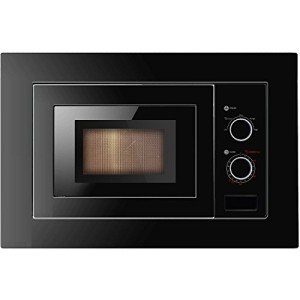A Built in Microwave Oven Combo Offers Convenience and Versatility
A built-in microwave oven combo provides the best of both worlds by making your microwave and oven into one unit. They can free up counter space and give your kitchen a classy appearance.
These models have powerful broilers that cook evenly, and their microwaves heat food quickly. These models offer a range of options to cook different food items.
Size
A built-in microwave and wall oven combination is a perfect solution for kitchens of all kinds. It is a combination of the convenience of a microwavable with the flexibility of wall ovens. Explore our collection of wall ovens that combine with microwaves to find the perfect fit for your home. Be sure to read the cutout specifications and installation instructions for the model you select to ensure that it is suitable in your space. Our microwave & oven combinations include microwave and oven models that come in a variety of designs, colors and styles that will match any decor. Also, look for features like smart and convenient digital controls, a power cook function, and built-in self-cleaning options to help reduce time.
Convenience

A built-in microwave oven will save you space on your counters and give your kitchen a more sleek look. It can be used to heat leftovers, frozen food items, and even pre-packaged food items. It can also eliminate the need for an additional countertop appliance or bulky stand-alone wall oven. If combination microwave oven built in looking to improve your home without the need for major remodeling the combination microwave oven is a great option.
You can find microwave ovens that come in a variety of designs to fit the decor of your kitchen. Some microwave oven combos feature doors that swing open from right to left, while others are drop-down designs that open the same way as traditional ovens. There is also a microwave oven combo with the drawer design that opens like an open cabinet. The microwave drawers can be easily reached and are ideal for small space.
Combination microwaves are also equipped with a variety of features that can make meal preparation easier and more practical. Some models feature sensors that allow you to steam your food. This feature alters the temperature and time of your food automatically to ensure perfect steamed fish and vegetables. Other features include a broil feature that allows you to quickly melt cheese or brown your favorite dish and Crispwave(tm) technology that allows you to grill food items, bake and crisp them.
Consider how often you will use each feature when choosing a microwave-oven combination. If you'll use the oven component of your combo more frequently than the microwave, you may be better off with an oven with two walls instead. It's also important to remember that a combo appliance typically has less capacity than a conventional standalone oven.
Once you've selected the best microwave and oven combination for your needs, it's time to think about the installation. Over-the-range models are installed over your stovetop or cooktop and connected to the power outlet. Built-in microwaves can be incorporated into the walls or cabinets of your kitchen. Some models include trim kits to ensure that your new microwave is in line with your cabinets.
Energy Efficiency
Built-in microwave oven combos are a great choice for those with smaller kitchens in their home or apartment. They can help save cabinet space that would normally be taken up by two separate appliances. Additionally, they also can help reduce energy usage. They generally provide the most efficient cooking method than traditional wall ovens, as they tend to use less energy. In addition, they can be used to cook both food and warm dishes, which reduces the necessity for additional appliances like toasters or warming plates.
When evaluating possible amendments to energy conservation standards, DOE conducts several analyses which include assessment of technology and market, screening analysis, engineering analysis, and a national impact analysis (NIA). In this SNOPR DOE will utilize its existing engineering analysis on microwave ovens to determine what level of efficiency improvements are possible for this product category.
DOE will assess the design of a microwave to a set energy performance objectives in the engineering analysis. The engineering analysis will then determine the maximum improvement in energy efficiency that is technologically feasible based on the most advanced microprocessor-controlled model available on the market or in working prototypes, or the maximum reduction in energy consumption that is technically achievable with the current technologies available for this product class.
As part of the NIA, DOE will evaluate the impacts on consumers for each product class including lifecycle cost savings, and simple payback periods ("PBP"). DOE will use its Government Regulatory Impact Model with an adaptation for microwave ovens to calculate industry net present value ("NPV").
DOE will also evaluate the effects on manufacturers and will use a modified industry cash flow model that is adapted to this product type to calculate manufacturing NPV. Finally, DOE will consider the potential impact on small business manufacturers and other manufacturer subgroups to identify any that could be affected in a different way by these proposals.
DOE will also consider whether the test procedure for microwave ovens needs to be updated in order to include active mode power consumption and a possible integrated energy use metric. Currently, the test protocols only cover standby mode power use.
Design
Microwaves generate heat by causing water molecules to vibrate in food. Wall ovens depend on the circulation of hot air, while microwaves rely on waves to cause food molecules to vibrate. Combination wall ovens blend these two different appliances into one unit that saves kitchen space and offers sleek, modern design. But you need to carefully think about your needs and budget before deciding to purchase a combination wall oven. Some of the ovens we evaluated have performance or design issues.
